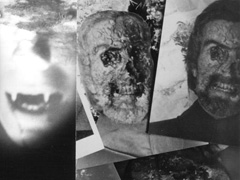


We take a look at those whose city of origin is as much a part of their repertoire as signature melodies and basslines.
The Kinks
Much like the Beatles, the Kinks started out with upbeat rhythm and blues songs, written by frontman Ray Davies. From the mid-sixties onwards Davies began tackling social issues like the class divide, the rise of consumerism and inner city poverty. Examples include Dedicated Follower of Fashion, which criticises the cult of Swinging London, and Most Exclusive Residence For Sale, about “new money”. With tracks like these Davies became something of a raconteur of British life, which Blur’s Damon Albarn would take tips from 30 years later (see below). The Kinks’ most famous song is Waterloo Sunset, which depicts a couple on a bridge near Waterloo, and often appears on lists of the best songs of all times. Davies has pursued a solo career since the Kinks split in 1996, and in 2004 was given a CBE for services to music.
Dizzee Rascal
Dizzee Rascal, real name Dylan Kwabena Mills, grew up in Bow, a fact he mentions several times on debut album Boy in Da Corner, the first album to introduce grime, a very London genre, to a mainstream audience. At the start of his career he rapped about the environment around him. Boy in Da Corner was a critical and commercial success, leading to Rascal winning the Mercury Music Prize in 2003. Single I Luv U is about teenage boys and girls using their sexual conquests to blackmail each other. A universal theme perhaps but his use of language is pure East End. Since the success of his first album he’s collaborated with people as disparate as Calvin Harris, Beck, Basement Jaxx and Shirley Bassey, and his early strident grime sounds have been replaced with slicker production techniques.
\n\nSaint Etienne
Formed in 1990, Saint Etienne frequently referenced their native city on songs such as London Belongs To Me and The Leyton Art Inferno; their anthology was even called London Conversations: The Best Of Saint Etienne. On 2005 album Tales From Turnpike House each track talks about a different character living in a block of flats named after a Clerkenwell building, but reimagined in the suburbs. Even before hearing the subject matter, the group’s sound gives away where they are from. Bob Stanley, Pete Wiggs and vocalist Sarah Cracknell were typically filed under “indie-dance”, as their brand of electro-pop contained elements of acid house, particularly in their early years, along with a very British rock sound reminiscent of the sixties. They’ve also toyed with folk and more commercial dance music over the years.
Basement Jaxx
The duo from Brixton hit the big time with their debut album Remedy, which featured a host of carnivalesque melodies that fused house, garage and dancehall. On subsequent albums they collaborated with artists from different genres such as Me’shell Ndegeocello, Siouxie Soux, Lily Allen and Dizzee Rascal. Primarily entrenched in dance music, their discography encompasses hip hop, grime, indie, house and garage, often blending London-genres (grime, garage) with more universal styles. Felix Buxton and Simon Ratcliffe named themselves after their clubnight in Brixton, and remain affectionate of their south London neighbourhood, frequently playing at local clubs like Jamm years after becoming famous. So famous in fact, that get asked to remix people like Justin Timberlake and N*E*R*D.
\n\nDamon Albarn
As chief songwriter and frontman of Blur, Albarn paid homage to one of his heroes, Ray Davies, by emulating his commentary on urban and suburban life, particularly on earlier albums such as Parklife and The Great Escape. At the height of Britpop, and during Blur’s rivalry with Oasis, criticism was levelled at Albarn for being a “mockney”. More to the point songs like Stereotypes, with lyrics about oversexed suburbanites, have dated pretty badly. In 2006 Albarn formed The Good, the Bad and the Queen, a supergroup consisting of Paul Simonon of The Clash, Simon Tong of The Verve and Fela Kuti’s drummer Tony Allen. In 2007 they released their only album to date, which Albarn described as a song cycle about life in modern day London.
Lily Allen
Lilly Allen burst onto the scene with Smile in 2006, a calypso-influenced ditty about a girl revelling in her ex-boyfriend’s troubles after he’s cheated on her. During her first few years of fame, Allen’s habit of donning a prom dress, chunky Pat Butcher-style earrings and trainers coupled with her outspoken nature made her one of the most popular females in British music in the late noughties. The daughter of Keith Allen, he left the family home when she was four, and her mother brought her up on a council estate for many years. She also attended 13 different schools due to being frequently expelled for drinking and smoking. On tracks like the reggae-tinged LDN, text-speak for London, she describes the city’s gritty aspects (A fella looking dapper/But he’s sitting with a slapper/Then I see it’s a pimp and his crack whore) but subsequently sings its praises. Other songs like Knock ‘Em Out use slang that is intrinsically London. While she didn’t have a normal upbringing by any means, her first album Alright, Still in particular encapsulates youth culture in the Big Smoke.


